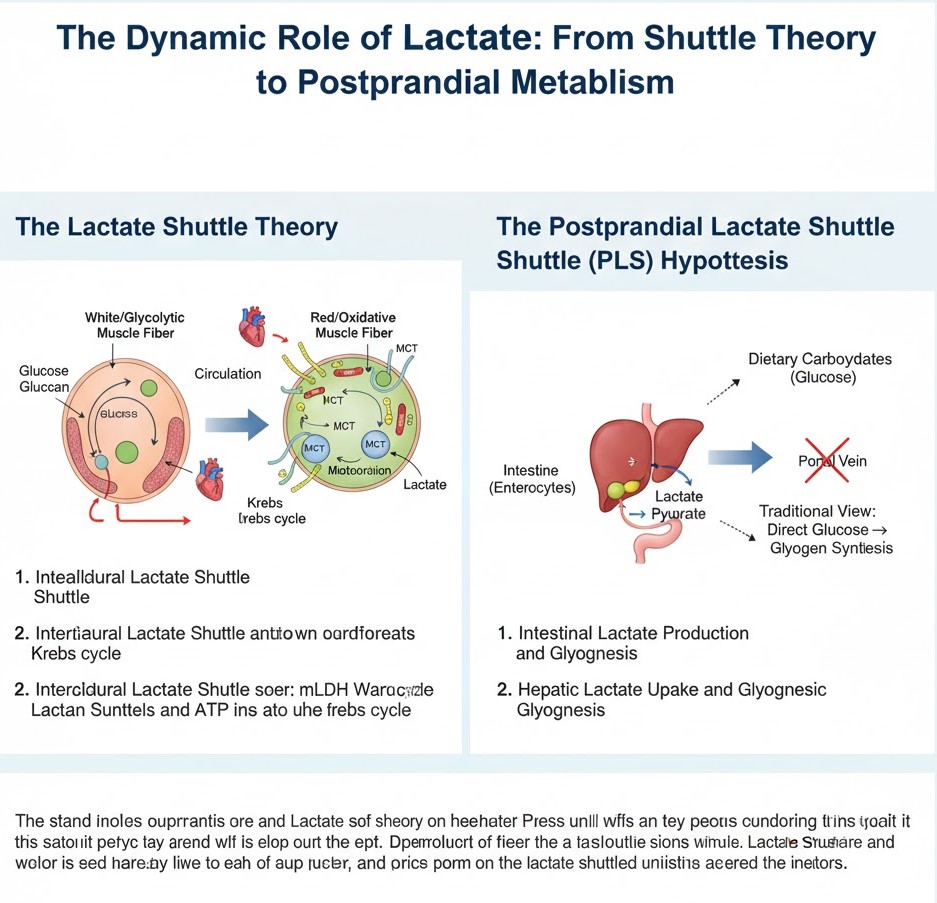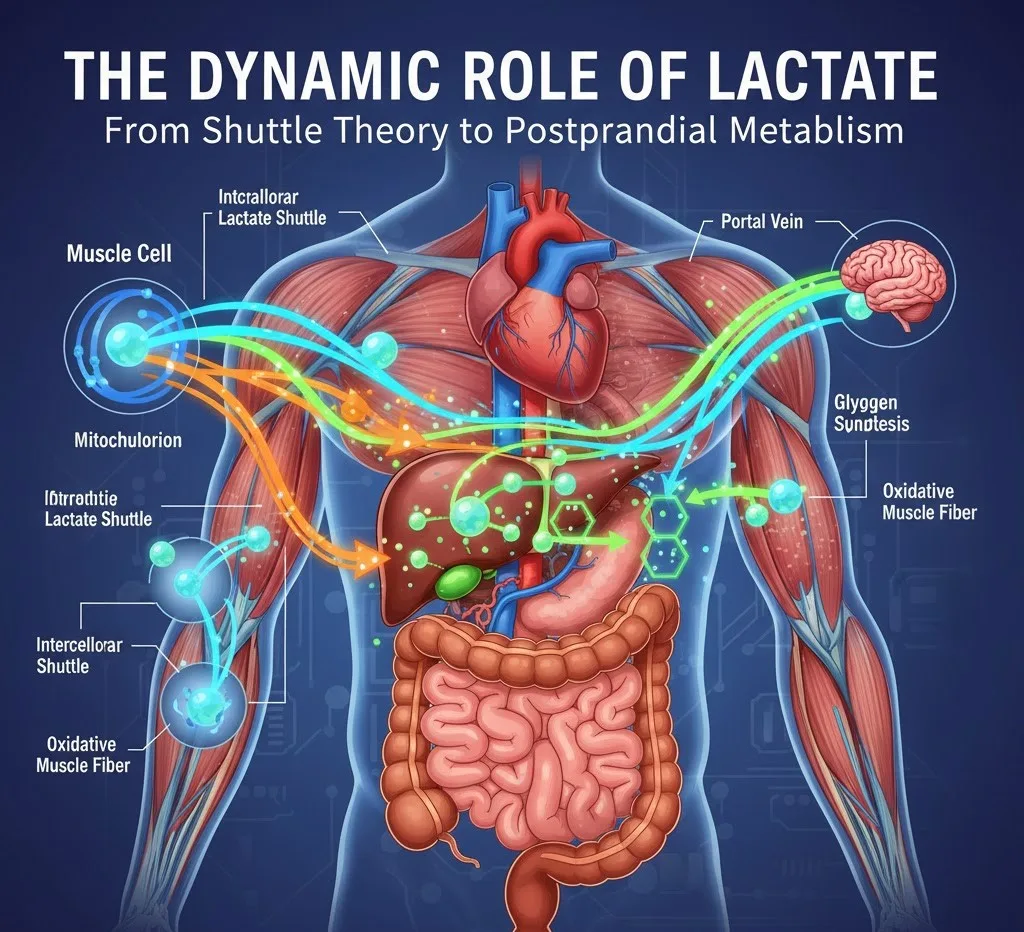Lactate, long considered a mere byproduct of anaerobic metabolism and a harbinger of muscle fatigue, is increasingly recognized as a vital signaling molecule and a versatile energy substrate. Recent research has illuminated its dynamic role in inter-organ communication and postprandial (after-meal) carbohydrate processing, challenging traditional physiological paradigms. This article explores two key concepts that underscore lactate's importance: the Lactate Shuttle Theory and the Postprandial Lactate Shuttle Hypothesis.
The Lactate Shuttle Theory: A Paradigm Shift in Cellular Energy Transfer
The Lactate Shuttle Theory proposes that lactate is not just metabolic waste but a crucial mediator of energy transfer and communication both within cells (intracellularly) and between different cells and tissues (intercellularly).
1. Intracellular Lactate Shuttle: Within a single cell, lactate produced in the cytoplasm (e.g., during glycolysis) can be transported into the mitochondria. Here, it is converted back to pyruvate by mitochondrial lactate dehydrogenase (mLDH) and subsequently enters the Krebs cycle for complete oxidation, generating ATP. This "intracellular shuttle" allows for efficient use of lactate as an energy source within the same cell that produced it.
2. Intercellular Lactate Shuttle: This aspect of the theory describes the movement of lactate between different cell types or organs. Cells with high glycolytic rates (e.g., fast-twitch muscle fibers, red blood cells, some cancer cells) produce significant amounts of lactate. This lactate can then be released into the bloodstream and taken up by other cells (e.g., oxidative muscle fibers, heart, brain, liver) that have a higher oxidative capacity. These "consumer" cells utilize lactate as a preferred fuel source, especially during periods of high energy demand. Monocarboxylate transporters (MCTs) play a pivotal role in facilitating this movement across cell membranes.
The Lactate Shuttle Theory redefines lactate as a pivotal signaling molecule, orchestrating metabolic harmony across various tissues and organs, rather than simply a metabolic dead-end.
The Postprandial Lactate Shuttle (PLS) Hypothesis: A Novel View of Carbohydrate Metabolism
While the Lactate Shuttle Theory focuses on lactate's general roles, the Postprandial Lactate Shuttle (PLS) Hypothesis specifically addresses how dietary carbohydrates are processed after a meal. This hypothesis offers a novel perspective on glucose metabolism, particularly in the liver.
Traditionally, it was believed that after carbohydrate-rich meals, absorbed glucose travels directly to the liver via the portal vein, where it is either used for energy or stored as glycogen. The PLS Hypothesis, however, suggests a more nuanced pathway:
1. Intestinal Lactate Production: According to the PLS Hypothesis, a significant portion of dietary glucose is first metabolized into lactate within the intestinal cells (enterocytes) after absorption. This process, known as "aerobic glycolysis" or the "Warburg effect" in the gut, may serve to protect the liver from excessive glucose exposure and contribute to gut energy homeostasis.
2. Hepatic Lactate Uptake and Glycogenesis: The lactate produced in the intestine is then released into the portal circulation and preferentially taken up by the liver. In the liver, this lactate serves as a primary substrate for gluconeogenesis (glucose production) or, more importantly in this context, for glycogen synthesis (glycogenesis). This means that a substantial amount of liver glycogen might be synthesized from lactate rather than directly from glucose.
Implications: The PLS Hypothesis challenges the conventional understanding of direct glucose-to-glycogen conversion in the liver. It suggests an indirect pathway where the gut acts as an initial metabolic filter, converting glucose to lactate, which then becomes a key precursor for liver glycogen. This could have significant implications for understanding metabolic disorders, such as type 2 diabetes, and for optimizing dietary strategies.
In conclusion, both the Lactate Shuttle Theory and the Postprandial Lactate Shuttle Hypothesis underscore the multifaceted and crucial role of lactate in human physiology. They paint a picture of lactate not as a metabolic villain, but as a dynamic intermediary that facilitates energy distribution, inter-organ communication, and efficient carbohydrate utilization, revolutionizing our understanding of metabolic regulation.
Here is an image summarizing the concepts:


